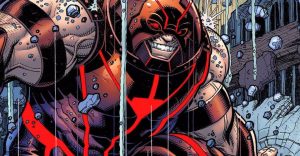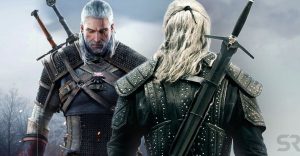Marsupilami: A Beloved Disney Cartoon Is Getting A Dark Comic Revival

Creators Zidrou and Frank Pé of the Marsupilami: The Beast two-part series were obviously cognizant of the fact that their dark comic revival of the eponymous Disney cartoon would garner a great deal of attention. Even one of their characters in the actual comic goes so far as make a rather smug comment that probably mirrors exactly what Zidrou and Pé think: “People sure do have a weakness for weird animals that look like they came right out of a Disney cartoon.” It’s true, but that weakness is much more pronounced if these weird animals are actually based on a Disney cartoon. And that’s the case here.
In truth, this comic book series’ main influence is the original creator of the Marsupilami, André Franquin, but is undoubtedly riding on the coattails of Disney’s rendition that brought Marsupilami into the mainstream with its 1990s TV series. But besides the name, there are very few similarities between the two, besides the fact that the marsupial has an outrageously long tail (it’s 28 feet in the comic) and says “Hooba” (though, it should be noted that this is the only thing Europe’s version can say while Disney’s had a rather advanced vocabulary for an animal in a kid’s TV show).
But another correlation exists between the Disney cartoon and Europe’s adult-themed comic that The Beast takes full advantage and, ironically enough, sets the comic’s overall darker tone. Disney’s Marsupilami was persistently at the mercy of Norman The Poacher, who usually expressed his unpleasantness by trying to catch, thwart or just plain bully the one-of-a-kind marsupial and his friends. Meanwhile, Zidrou and Frank Pé’s series begins with men who have already done what Norman could never quite achieve throughout the show’s 13 episodes. The marsupial has been captured, and he’s not happy about it, especially since the ship where he’s imprisoned was stuck at sea for a prolonged amount of time, resulting in all of his fellow animal companions dying horrific deaths.

The Marsupilami’s displeasure is made quite apparent in the first few pages of the 150-plus issue when he makes short work of two of his captures in typical horror-book fashion. Their demise is not shown to the reader, but the fact that the creature utilizes his tail to drag them into the shadows as they try to claw their way free makes what happens next pretty clear. In addition to the darker tone, the comic is ensconced in adult themes that would never appear in a 1990s Disney cartoon, from animal cruelty and starvation, to subject matters that even some adults might find controversial. For example, the man character, a small German boy living in Brussels during World War II, is relentlessly teased because his father was a Nazi, though it sounds as if it wasn’t by choice. There’s also a horrifying scene when the Marsupilami accidentally hangs itself, and as it struggles, some bullies mock and ridicule the poor creature.
All their differences aside, Marsupilami: The Beast can actually be perceived as a sequel to Disney’s TV show. Even their different styles blend together perfectly as one giant tale (pun intended). The Beast tells the story of what would have befallen the cartoon marsupial should Norman have ever caught him, which would explain the darker tone, while Disney‘s showed the Marsupilami in his natural habitat, hence the lighthearted nature of the series. Naturally, the creature’s demeanor would change once captured, from the cute, carefree critter to the beast-like monstrosity that lashes out at children and lurks in the shadows. So maybe they’re more alike than they actually appear?
About The Author

















